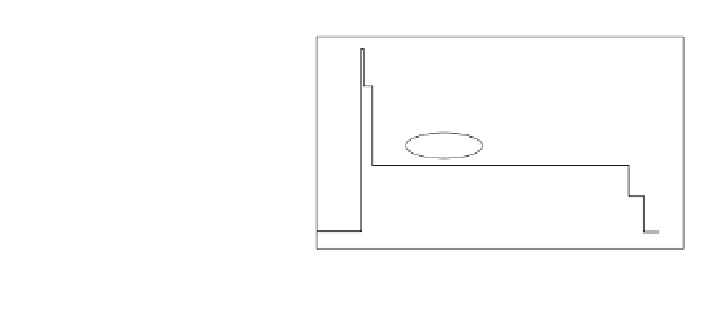Environmental Engineering Reference
In-Depth Information
Fig. 4.5 Fuel flow during a
flight over a distance of
1,000 km
take
off
2.5
2.353
1.913
climb
out
2.0
1.5
final
approach
cruise
0.980
1.0
taxi
out
0.632
0.5
taxi
out
0.205
0.205
0
0
20
40
60
80
100
time [min]
4.2 Fuel System in Airplanes
There is a direct relationship between the volume of the fuel tank, the structure of the
supply system, and the flow of the fuel to the engine. The fuel supply system of a jet
engine has to regulate opening and closing valves, adjust compressor blades, thrust
exhaust nozzles, and operation of the afterburner. It must avoid thermal and mechanical
overload, prevent unstable compression, and burning when accelerating [
24
].
The fuel system of airplanes operates under variable air pressures and tem-
peratures depending on flight altitude, which indirectly influences the combustion
chamber temperature, and the compressor pressure.
The fuel consumption of airplane engines depends on the flight phase, i.e., on
the load of the engines; see Fig.
4.5
.
4.2.1 Fuel Storage and Supply
Aircraft typically uses three types of fuel tanks:
• Integral tanks which are contained in ''wet wings'' and are applied in larger
aircraft;
• Rigid removable tanks in metal constructions for smaller aircraft; and
• Bladed tanks for high-performance light aircraft [
25
].
Multiple engines demand a multiple tank system, consisting of main and auxiliary
tanks. Selector valves, jettisoning, and defuel valves regulate the fuel flow; see
Fig.
4.6
.
The fuel is moved from the tank assembly to the jet engine with a low pressure
pump at 8.6 9 10
5
Pa, i.e., 125 psi, using geared wheel, wing cell, or piston
pumps. The fuel in the aircraft fuel tanks cools down at cruising altitudes with an
approximate Outside Air Temperature of -40C(-40F) [
26
].






















Search WWH ::

Custom Search